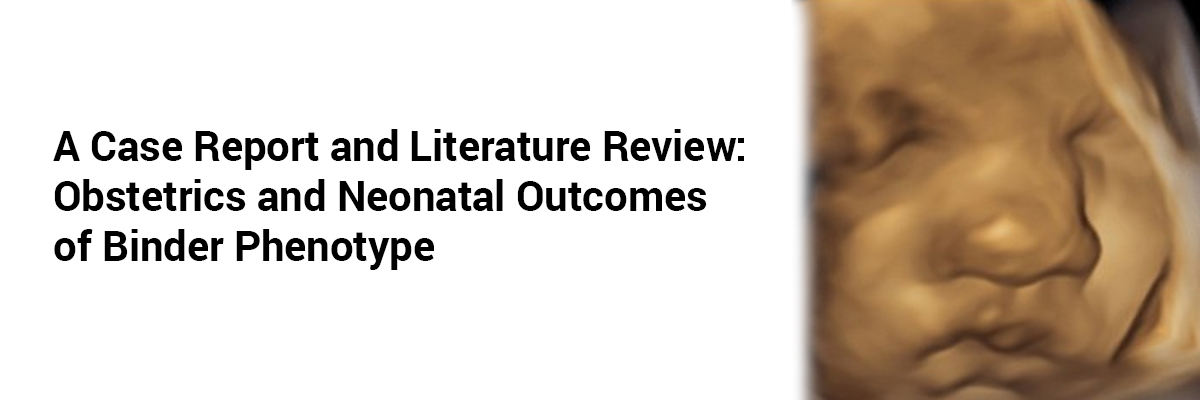
A case report and literature review: Obstetrics and neonatal outcomes of binder phenotype
The Binder phenotype (BP) refers to a specific type of maxillo-nasal dysplasia characterized by a flattened nose, verticalized nasal bones, and maxillary retrusion, also known as BP triad. This facial anomaly can occur alone or in combination with other genetic and acquired conditions. The present systematic review was conducted to gather information on antenatal findings, maternal and obstetric characteristics, and neonatal outcomes for cases of BP diagnosed in utero. The researchers also summarized obstetrics and neonatal characteristics of their case report.
The review identified 47 cases of BP, with a median gestational age of 23 weeks at diagnosis. BP was associated with other skeletal or non-skeletal anomalies in majority cases, with only six confirmed as isolated. Notably, 12 neonates exhibited respiratory distress syndrome, and BP was found to be one of the clinical findings of chondrodysplasia punctata X-linked in 18 cases.
The case presented was of a 32-year-old mother, who had no significant medical or obstetric history, was referred at 29 weeks of gestation due to preterm labor. Prenatal screenings for chromosomal abnormalities were not conducted, and no structural issues were noted during the mid-trimester anomaly scan. Detailed ultrasound revealed normal fetal growth and mild polyhydramnios, along with a reduced nasofrontal angle and prominent lips, leading to a diagnosis of BP.
The mother declined amniocentesis, and two days later, she delivered a male neonate. Postnatal examination revealed a webbed neck, flat nasal bridge, mild hypertelorism, and low-set ears. Due to respiratory distress, the neonate was transferred to the neonatal intensive care unit, where he received intubation and ventilation support. However, he developed severe hypoxia despite treatment.
Neonatal evaluations indicated a persistent ductus arteriosus and a right-to-left shunt, along with radiographic findings of punctate calcifications and stippling in various skeletal areas. The absence of symmetric long bone shortening suggested a variant of chondrodysplasia punctata (CDP). Unfortunately, the neonate died on day 2 from severe metabolic and respiratory acidosis and intraventricular hemorrhage.
Post-mortem findings confirmed facial dysmorphism consistent with BP, with no other organ abnormalities. Karyotype analysis revealed a normal male pattern, while gene analysis identified a partial deletion of the ARSE gene, confirming the diagnosis of CDPX1.
Thus, to conclude although BP is frequently linked to other fetal defects, isolated BP cases tend to have favorable obstetric and neonatal outcomes. While exome sequencing may be more educative in situations where a syndromic condition is suspected, genetic testing using fluorescence in situ hybridization for ARSE deletion can be provided for CDPX1 diagnosis in fetuses with apparent isolated BP at midtrimester.
Source: Bosco M, Simonetto C, Loreti S, Grisolia G, Garzon S, Franchi M, Uccella S, Raffaelli R. Obstetrics and neonatal outcomes of binder phenotype with antenatal diagnosis: A case report and literature review. J Gynecol Obstet Hum Reprod. 2024 Aug 22;53(10):102836. doi: 10.1016/j.jogoh.2024.102836. Epub ahead of print. PMID: 39181504.








Please login to comment on this article